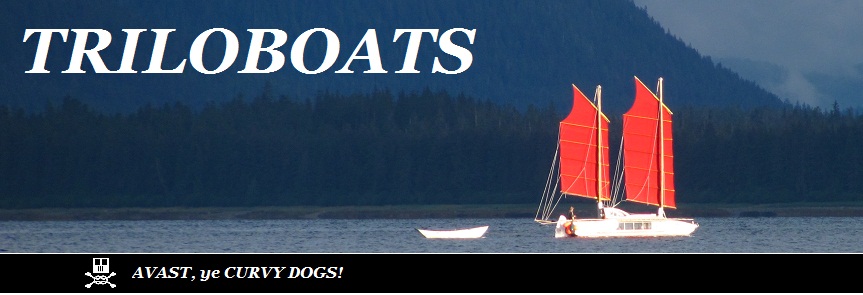 |
| The downward edge is the leading edge. Note upward bend at the inboard end. Source |
 |
| Atsushi Doi''s I-Scull from his US Patent The downward edge is the leading edge. Note upward bend at the inboard end. In recent versions, the handle pin has been moved to the upper side. |
In a fishtail gleam
She leans to kiss me as she goes...
-- From The King of Britain's Daughter(?) byGillian Clarke
A First Look at Vertical Sculling Oars
The Chinese Yuloh and similar Japanese Ryo are horizontal blade sculling systems. The blade follows a 'falling leaf' pattern, angling across the sweep and switching leading edges at the end of each stroke, and kicking up a little turbulent 'fuss' at each switch.
Atsushi Doi, Douglas Martin and others have been taking a good look at vertical blade sculling systems.
The blade is still swept to and fro, but the forward edge always leads, with less fuss at the switch (especially once moving forward). This otherwise wasted energy is, in theory, availlable to generate thrust.
A second refinement is that the relatively high aspect ratio blade (long for its height) is not only allowed, but encouraged to twist, much as might a propeller blade. This has positive, hydrodynamic effects (laminar effects discussed here). In part, water is turned and tossed aftward... increasing its equal and opposite thrust forward.
In Douglas Martin's oar, shown above, the slender tip is hooked aft of the blade's Center of Lateral Resistance (CLR). As the blade is pushed sideways (albeit at an angle) through the water, it resists and twists the flexible end of the blade, causing it to lag behind the plane of the main blade.
Atsushi Doi gets a similar effect via a small fin attached low on the blade. Not nearly as pretty, in my opinion, but is powerful, removable and allows easy experimentation.
 |
| Atsushi Doi's Ve-Scull Fin |
In a yuloh/ryo, the inboard end of the loom bends downward (or the mechanical equivalent). A lanyard led from this end to deck torques the loom outboard over the top, helping its horizontal blade to reverse.
In a Atsushi/Martin oar, the inboard end of the loom bends upward. A lanyard led from this end to deck torques the loom inboard over the top, helping the leading edge reverse.
If all goes according to theory, the same thrust should be developed with less effort than horizontal blades, or more thrust with the same effort.
As a bonus, the vertical blade system appears much easier to use than yuloh/ryos (which can be challenging for beginners). The video beow shows a monkey flinging down the gauntlet by using one of Atsuhi Doi's oars on the first go!
So I'm jazzed!
*****
There is considerable interest in these (including my own), and information is beginning to fill in. Most of it is for small craft, but there is now at least one video available for larger craft (relevant section comes after a bit).
Be aware that Atsushi Doi has patented several of his approaches to vertical blade sculling oars. While DIY is allowed, commercially interested persons should be aware of his intellectual rights.
Sources:
Atsushi Doi's Pages (translated and hosted in English)
Reprint from Small Boat Journal... note 'sculling aid' toward bottom.
YouTube, image and web searches using such phrases as "atsushi doi scull" and "vertical blade scull"


